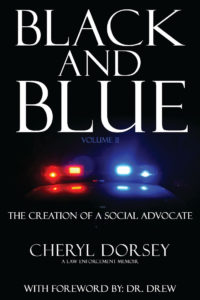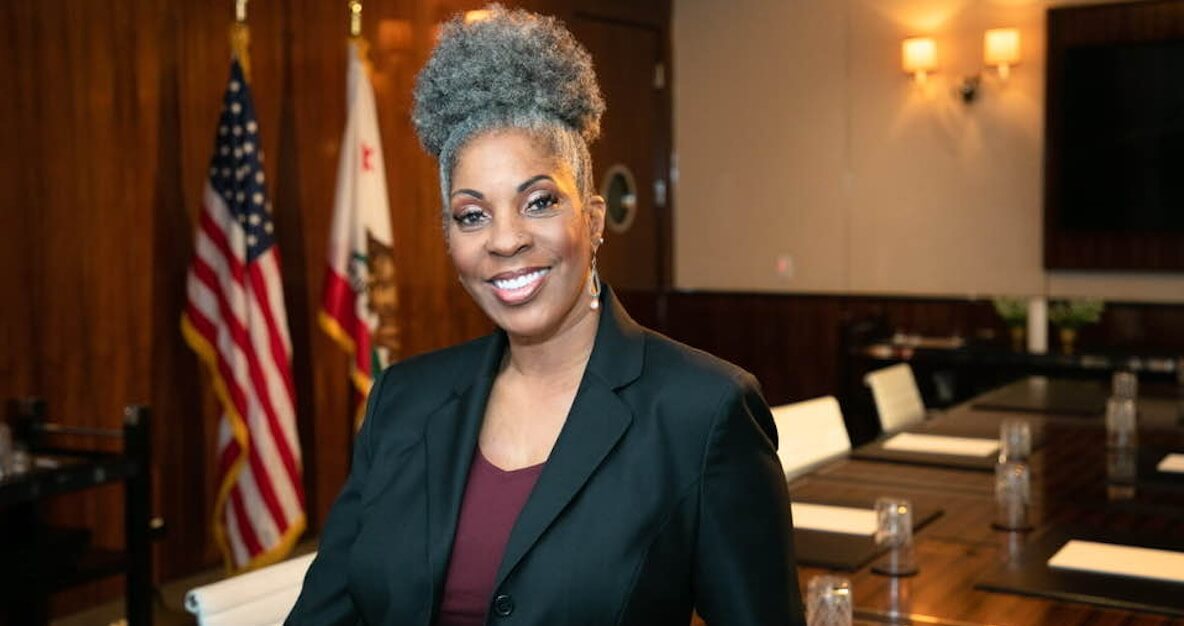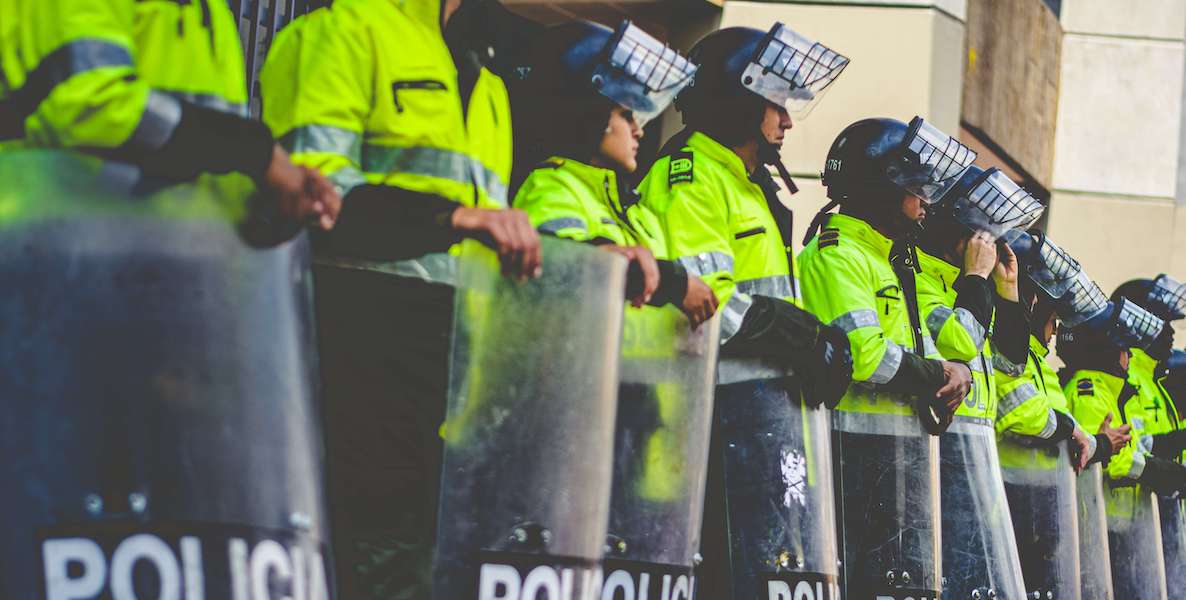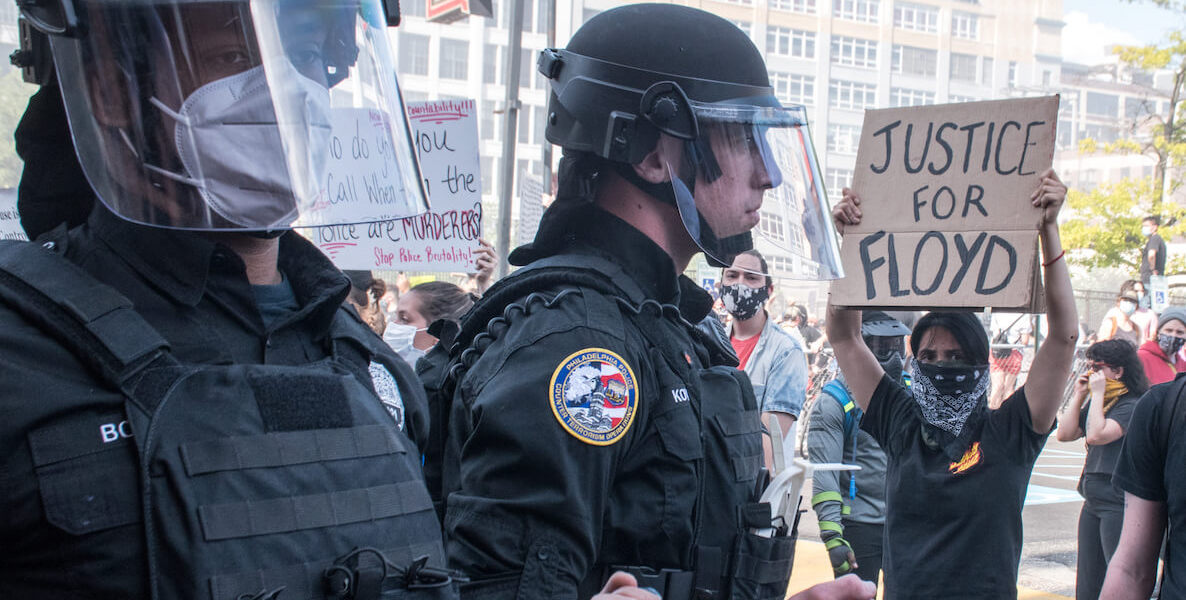Cheryl Dorsey, retired sergeant of the Los Angeles Police Department, knows what brokenness exists inside the American policing system; she’s seen firsthand the racial disparities of justice in our society and systemic abuses of power that have helped grow what authors like Michelle Alexander have called “a new era of Jim Crow.”
![]() After 20 years as an officer with the LAPD, she also has some ideas about how we might break down the disparities, attack the systemic abuse of power, and help our disenfranchised communities—particularly communities of color—navigate a system that often works actively against them instead of serving them.
After 20 years as an officer with the LAPD, she also has some ideas about how we might break down the disparities, attack the systemic abuse of power, and help our disenfranchised communities—particularly communities of color—navigate a system that often works actively against them instead of serving them.
In her book, Black and Blue: The Creation of a Social Advocate—excerpted below—Dorsey shares her hard-won understanding of the system as it exists now, and ideas for transformation.
Dorsey’s deep dive into the world of policing began in 1978, as a single mom who needed a good, steady job and decided to go into law enforcement. In 1980, she joined the mostly white, male-dominated LAPD and spent the next 20 years working in patrol and specialized units all over the city—two decades that gave her the stories, perspective and authority that she wields today as a powerful voice and advocate for reform and social justice.
Join us on December 8 as Sgt. Dorsey talks about how we can change the injustices we see in policing today—namely, how to combat the “warrior culture” and right some of the institutional wrongs—along with Sheriff Mike Chitwood Jr. (of Volusia County, Florida) and WURD host Charles D. Ellison. Part of our third annual Ideas We Should Steal Festival, the “Changing Police Culture” conversation is open to all—tickets are available here.
Want a compelling preview? Read this portion of Dorsey’s first chapter of Black and Blue below.

Black and Blue: The Creation of a Social Advocate
By Cheryl Dorsey
YOU HAVE BEEN WARNED.
In this new era of Jim Crow which consists of trumped up traffic stops, unnecessary deadly police shootings, and mass incarceration, I will be your social justice advocate. I will shine a light on mistruths, misconceptions and mistakes that could get you killed by a cop. I will demonstrate how “protect and serve” has become more about protecting errant officers and serving minorities grief, financial harm, and unspeakable heartache. Indeed, racial profiling, dishonest cops, abuse under the color of authority and disparate selective enforcement of the law is how injustice is served.
 I had no idea where I was headed when I decided to share the story of my life as a young black woman on the white, male dominated, Los Angeles Police Department (LAPD). However, I realized I had a story that needed to be told. And in telling my story I quickly realized that my experiences as a patrol officer and a patrol supervisor would become a critical and vital part of the discussions that were to come. As I reviewed and responded to a spate of deadly police encounters around the nation, I knew that in some cases an officer’s expressed fear of an individual, usually a man of color; and subsequent need for deadly force to gain control or compliance from said individual had been over-stated at most times and downright dishonest at others.
I had no idea where I was headed when I decided to share the story of my life as a young black woman on the white, male dominated, Los Angeles Police Department (LAPD). However, I realized I had a story that needed to be told. And in telling my story I quickly realized that my experiences as a patrol officer and a patrol supervisor would become a critical and vital part of the discussions that were to come. As I reviewed and responded to a spate of deadly police encounters around the nation, I knew that in some cases an officer’s expressed fear of an individual, usually a man of color; and subsequent need for deadly force to gain control or compliance from said individual had been over-stated at most times and downright dishonest at others.
My mission became one of educating communities on how to best survive police encounters, advocating for victim families who demanded justice for their loved ones murdered by police and creating opportunities for dialogue, understanding and bridge building in an effort to bring about improved police reform and officer accountability.
As an honorably retired, twenty-year veteran sergeant of the LAPD I knew that I could speak for these families regarding the cops’ actions before, during and after a fatal police encounter in a way that they could not. After all, I had once been a cop but I was also part of the community that was being so disproportionately affected by what appeared to be excessive and unjustified police force. I knew, based on my professional knowledge, which questions needed to be answered by these police chiefs to help family members understand how and why a police encounter could led to a death. As I watched police chiefs give lip service, regarding a thorough investigation and transparency, I felt especially compelled as a parent to step forward; it was my duty to stand in the gap for these grieving mothers and fathers.
Perhaps what I am saying is common knowledge to some and I may be preaching to the choir; but let’s go ahead and address the big, blue elephant in the room; the thin blue line; police culture. This big blue behemoth is not selective in who it crushes. Be clear, it tramples on everything that comes across its path that is contrary to its predetermined way forward. No one is immune. Community gets crushed on the outside of the system and [some] officers get crushed on the inside.
Historically, rampant, unabated police abuse in minority and poor white communities has been an all too frequent reality for some, and this abuse continues today. To illustrate that point, a New York city police officer choked an unarmed black man to death because he refused to submit to officers’ orders; a Ferguson, Missouri, police officer shot and killed an unarmed black teenager because he jaywalked; a Texas State Trooper snatched an unarmed black woman out of her car because she refused to put out a cigarette. There was plenty of outrage and disgust surrounding those tragedies, but no one in the minority community was surprised based on their lived experiences. Even though many of these images repeatedly splashed across television screens around the world, police department chiefs invoked the idea that there was something that had occurred moments before police cameras began recording, or some culpability existed on the part of the deceased that would surely justify what had been shown.
It was commonplace in the days that followed deadly police shootings for some police chiefs to further exacerbate the situation by metaphorically poking their finger in the family’s eye with smear campaigns and character assassination of the deceased. These tactics were designed to impugn the integrity of the person that died at the hands of one of their officers as if to infer that person had it coming. You’ve heard the police explanations, “he refused to comply”, “he ran” or “he scared me.”.
The continued abuses under the color of authority, ranging from assault to homicide, against men and women of color, young and old was happening too frequently with apparently no end in sight. So, you understand that if not you right now – you could be next. Your husband could be next. Your child could be next. I am here to help you survive police encounters.
So be clear, in this era of mass incarceration, police agencies seem committed to their perceived role of provider. That-is-to-say, the provider of a steady stream of black, brown and poor white folks into the system; they are the pipeline to the prison system. According to research by the University of California Irvine reported in March 2017 blacks are only 13% of the American population but a majority of innocent defendants wrongfully convicted of crimes and later exonerated. They constituted 47% of the 1900 exonerations listed in the National Registry of Exonerations as of October 2016 and the great majority of more than 1,800 additional innocent defendants who were framed and convicted of crimes in 15 large-scale police scandals and later cleared…”
Here’s an example, in Phase One of the mass incarceration process.
Seemingly under the guise of the Broken Windows theory, crime reduction, safer communities and traffic enforcement, police chiefs have directed their patrol officers to engage minority community members in a variety of ways. A time-honored method of engagement is an officer initiated activity such as a traffic stop or their favorite; an investigative stop. For the uninformed, an investigative stop is the method that some police officers use when they think someone (usually a black man) looks suspicious. Or, when an officer sees someone (usually a black man) in an area that the officer does not think that person should belong; or the individual is driving a car that in the officer’s opinion that person should not be able to afford. The detention then becomes contentious, physicality ensues on the part of the officer and next thing that person discovers is that they have been arrested for interfering with the officer’s official investigation, battery on a police officer or some made up criminal charge. What I like to refer to as contempt of cop ™ . That is, if you live. Because the alternative that has been witnessed time and time again is that the officer(s) escalates the use of force to a deadly force incident and now there is a death.
In this new era of Jim Crow which consists of trumped up traffic stops, unnecessary deadly police shootings, and mass incarceration, I will be your social justice advocate.
Contempt of Cop ™ is a phrase I coined to describe what happens when a police officer gets angry during a police contact. Contempt of Cop ™ is what happens when an officer decides to step outside of the boundaries of training and policy and punish someone who failed to follow an order. Should that person survive the officer’s physical assault, that person will next find themselves on the back end of an arrest. They will certainly go to jail. You see, there is an unwritten but well-known rule in street policing; if an officer puts hands on you, he can’t just leave you; you must go to jail for something. It may not be you right now – but it might be you next.
And in those instances where a detention ends with a police shooting, chances of surviving that police encounter are highly improbable; this we have been shown. Why? Because officers are not trained to “shoot to stop” – police are trained to kill. I have often been asked, “why didn’t the officer just shoot him in the arm or leg?” My honest response has always been, “because we are trained to kill.” Now, you won’t find any police chief saying that. But it is a fact. And if the reader understands that police officers perform like they practice then what I am about to say next will make perfect sense.
As a young, police recruit I spent hours at the LAPD academy gun range practicing to kill. Yeah, the firearms instructor told us that we were being trained to “stop the threat” but I was being evaluated and graded on my shooting proficiency, among other things. The overall goal was to accurately affect two rounds to center body mass (heart) followed by a head shot. Now, as the reader I ask you, “Am I being trained to stop, or am I being trained to kill?” You be the judge.
Although I was being told that I am being taught to stop the threat, in my mind I thought these two things could not be true; being told that I was shooting “to stop” while simultaneously aiming at vital body parts. This is what I like to refer to as police code talk; double speak. You’ve heard it many times being spoken by police chiefs as they try to convince the public during a press conference for instance that six shots needed to be fired by an officer to stop a jay walker or that an individual selling CDs wouldn’t stop moving as officers straddled him and sat on his chest therefore, the only way for the officers to gain compliance was to shoot the man. Although I had been trained to fire my weapon as a last resort not a first; and I had been trained in the use of non-lethal devices and grappling techniques the notion of shooting someone because they won’t be still was nonsensical. So, here’s where the duality of language comes in. My humanity tells me that if I want to stop a threat, why am I not trained to shoot in the arm or leg. I was trained to shoot center body mass with a double-tap (two rounds fired in rapid succession) and if the threat continued then a head shot followed, which was known as a “failure drill”.
![]() I am sure that my training at the LAPD academy was not unique and so like many of my co-workers and cops around the nation, I participated in weekly shooting exercises at the gun range. The purpose was to obtain a shooting medal to be worn on my uniform which indicated my level of shooting proficiency; a badge of honor if you will. In addition to bragging rights, there was a financial incentive offered by the LAPD; a monthly cash bonus for officers with high shooting scores. I wanted to be good. I needed the extra pay. So, I became a trained and decorated killer.
I am sure that my training at the LAPD academy was not unique and so like many of my co-workers and cops around the nation, I participated in weekly shooting exercises at the gun range. The purpose was to obtain a shooting medal to be worn on my uniform which indicated my level of shooting proficiency; a badge of honor if you will. In addition to bragging rights, there was a financial incentive offered by the LAPD; a monthly cash bonus for officers with high shooting scores. I wanted to be good. I needed the extra pay. So, I became a trained and decorated killer.
Now that the reader has become familiar with Phase One, the stop; here’s Phase Two – let’s “get this person into the system.” The penal system.
To continue reading this excerpt and to order Dorsey’s book, please visit her website here.






